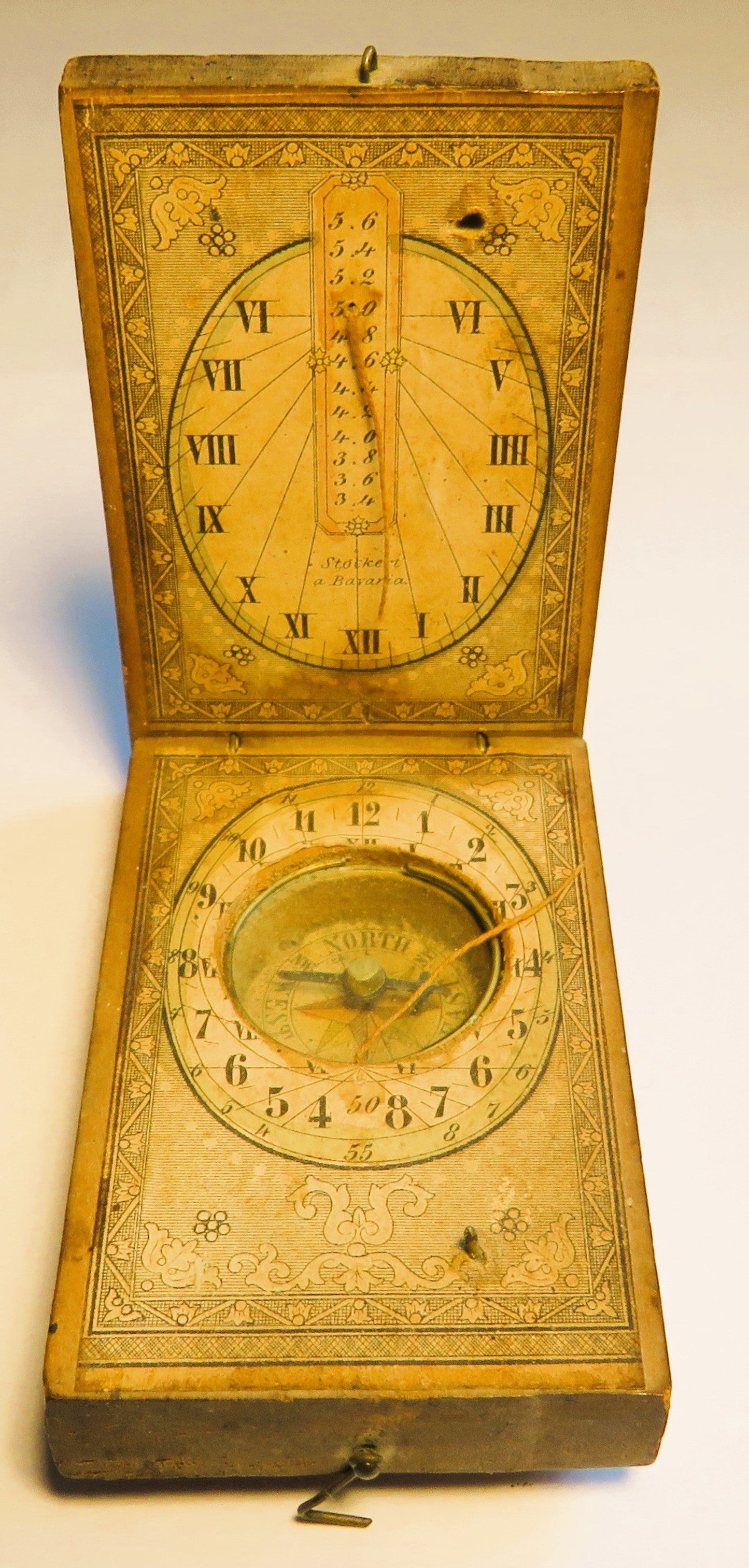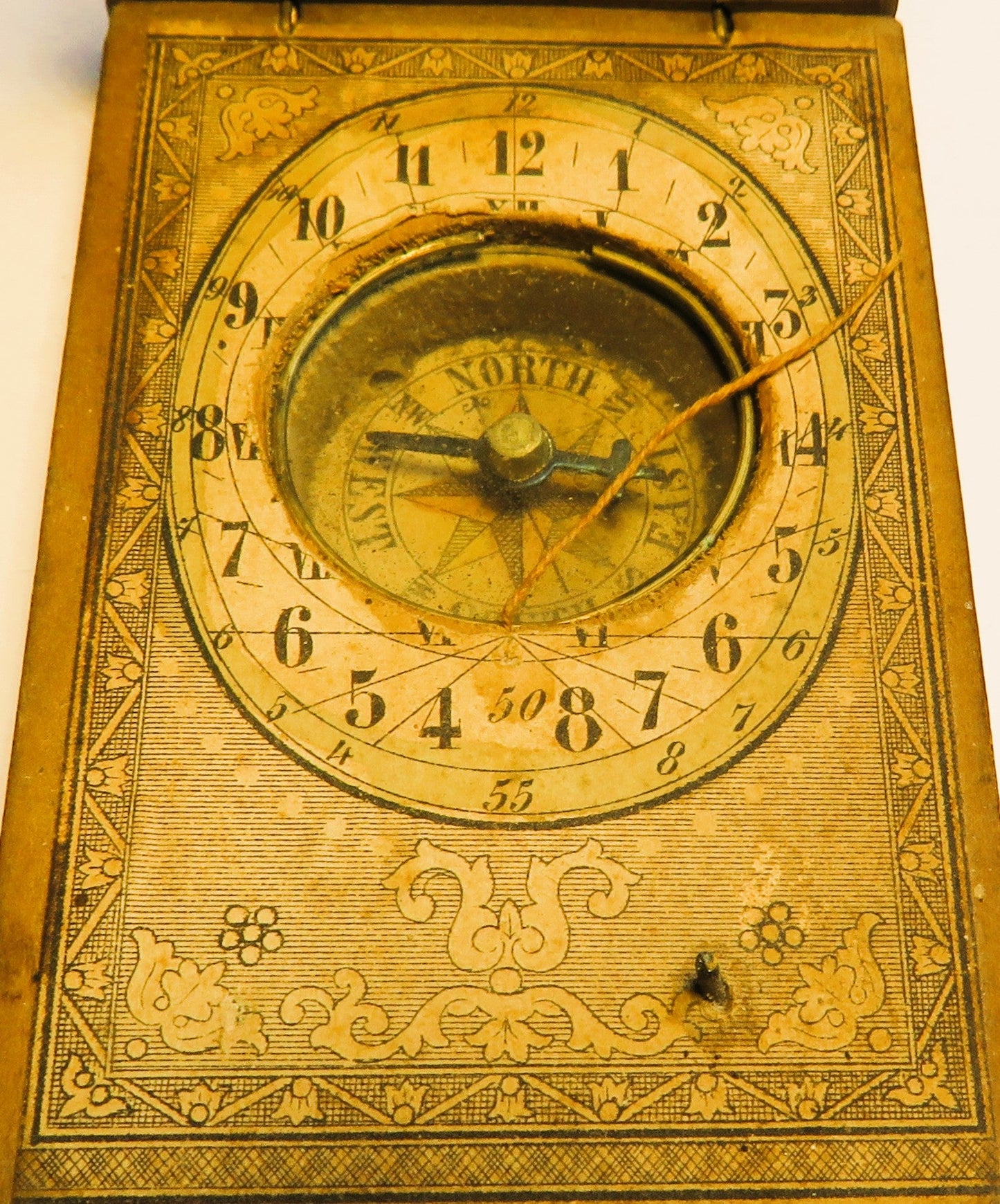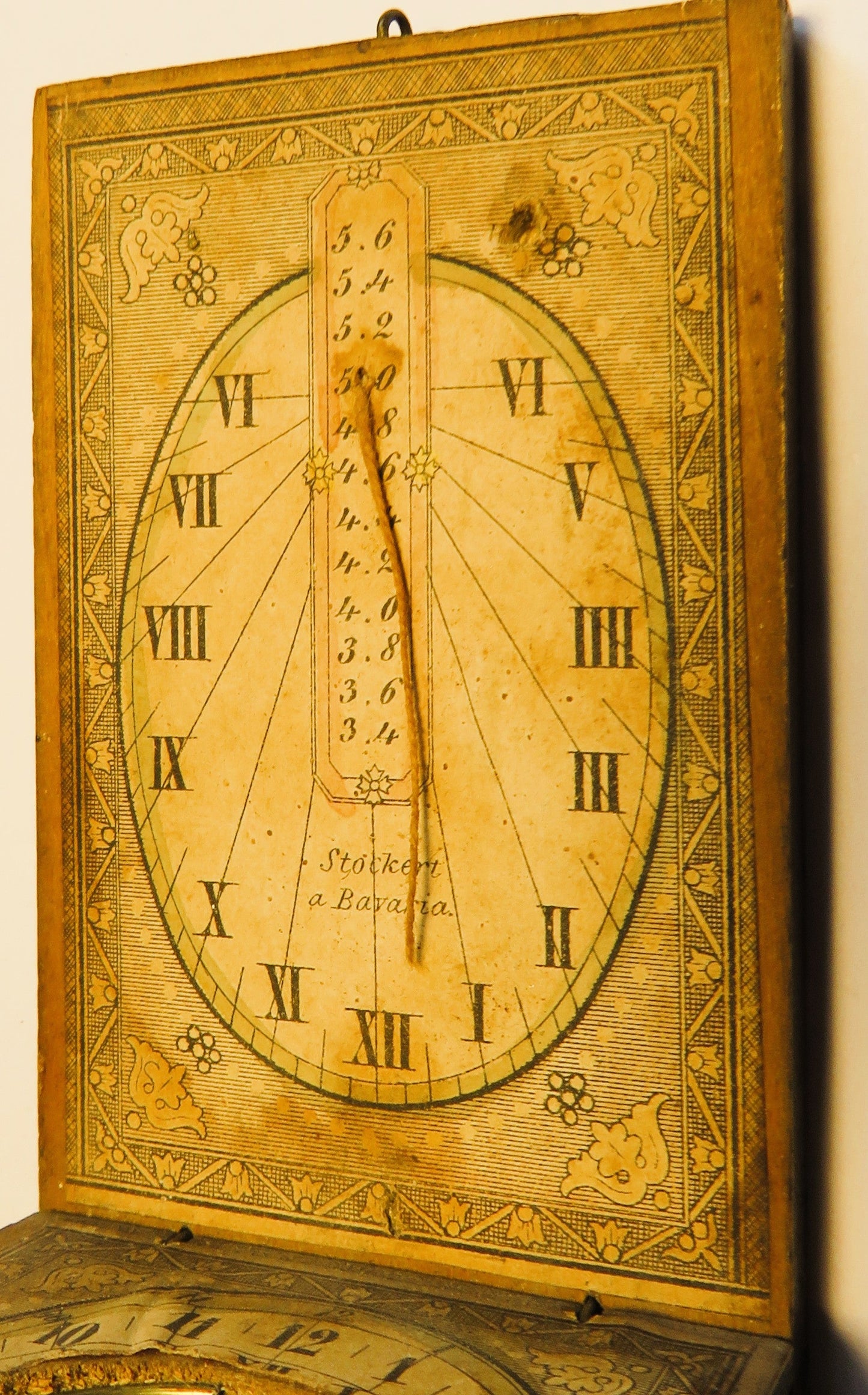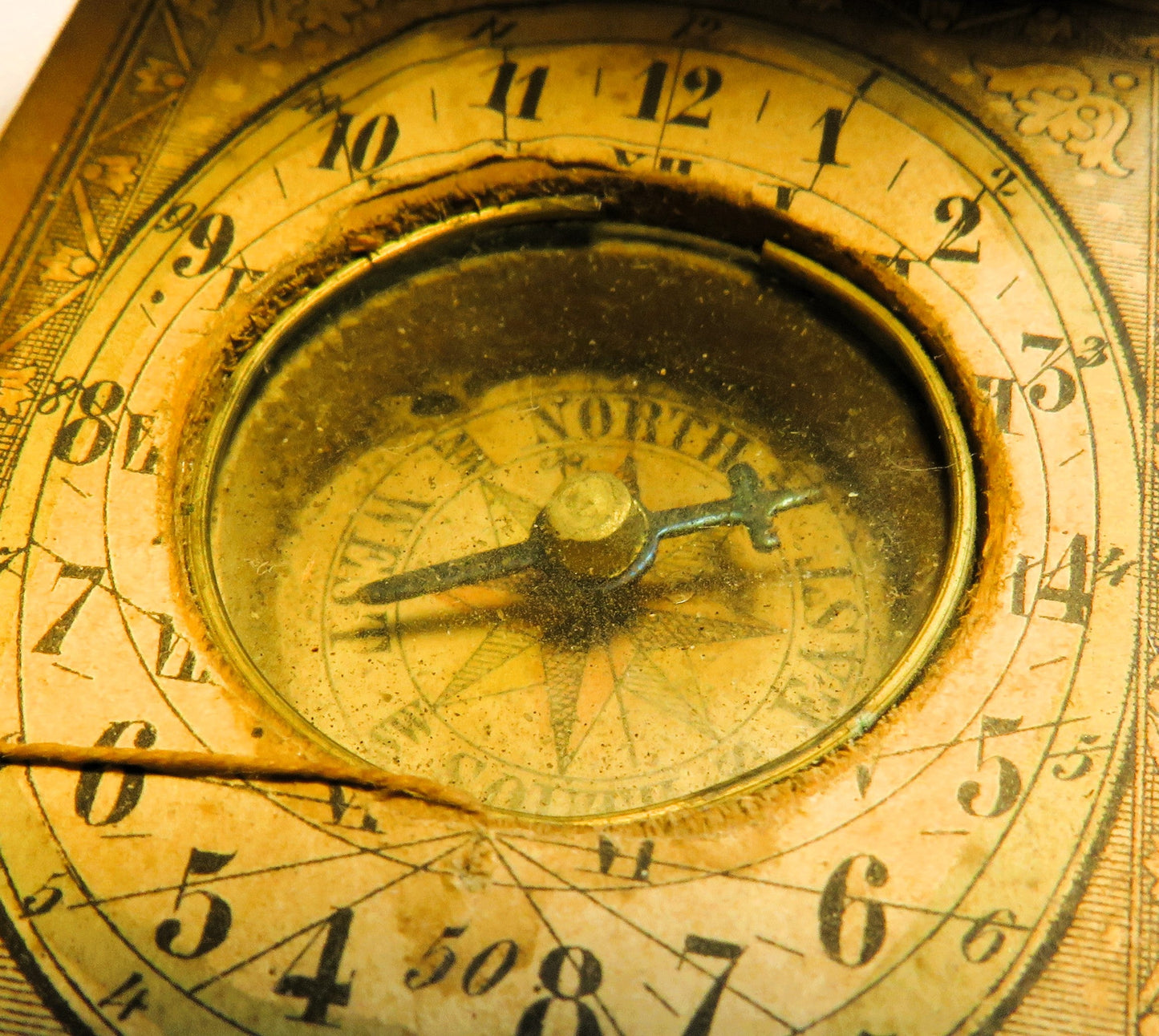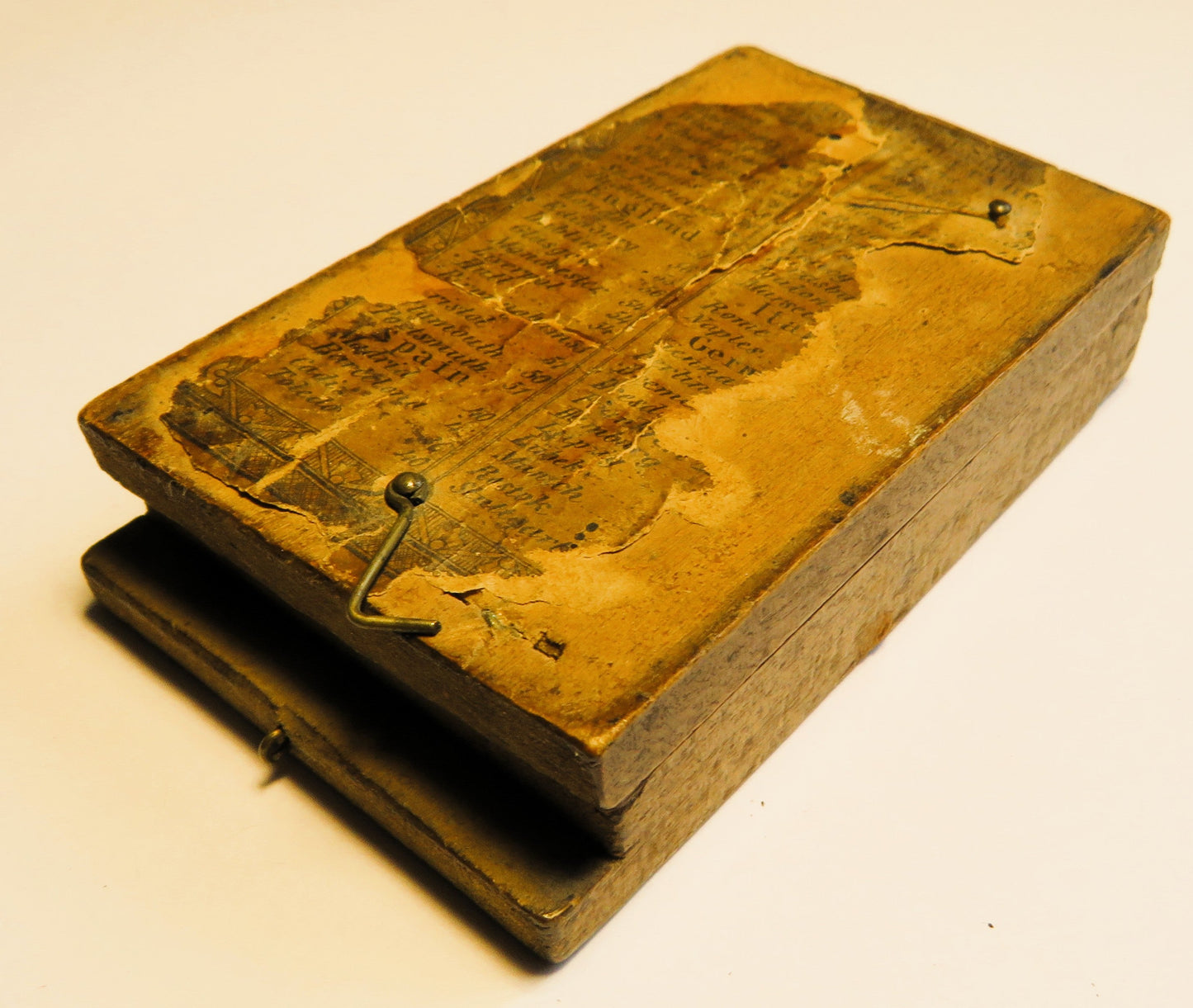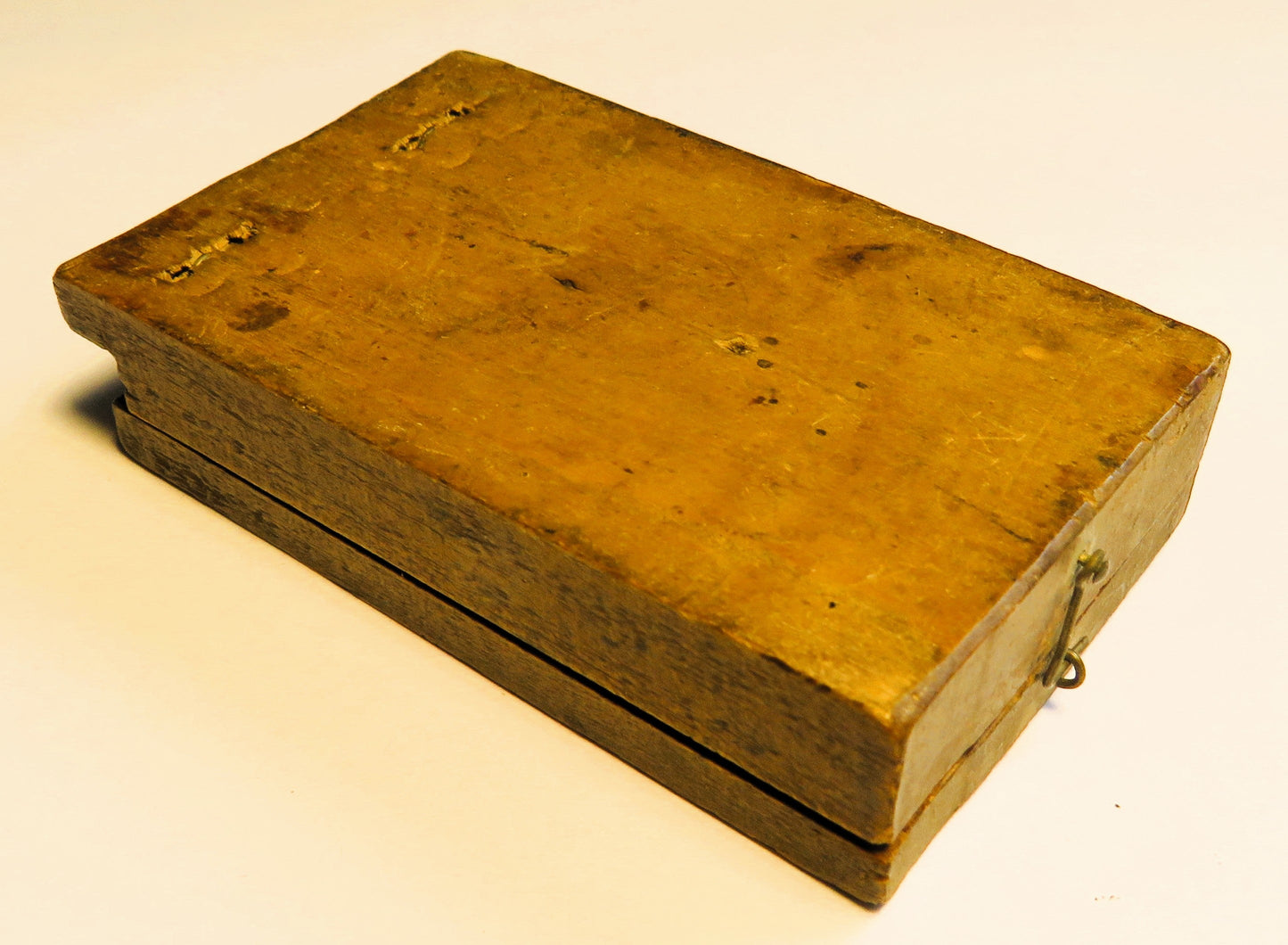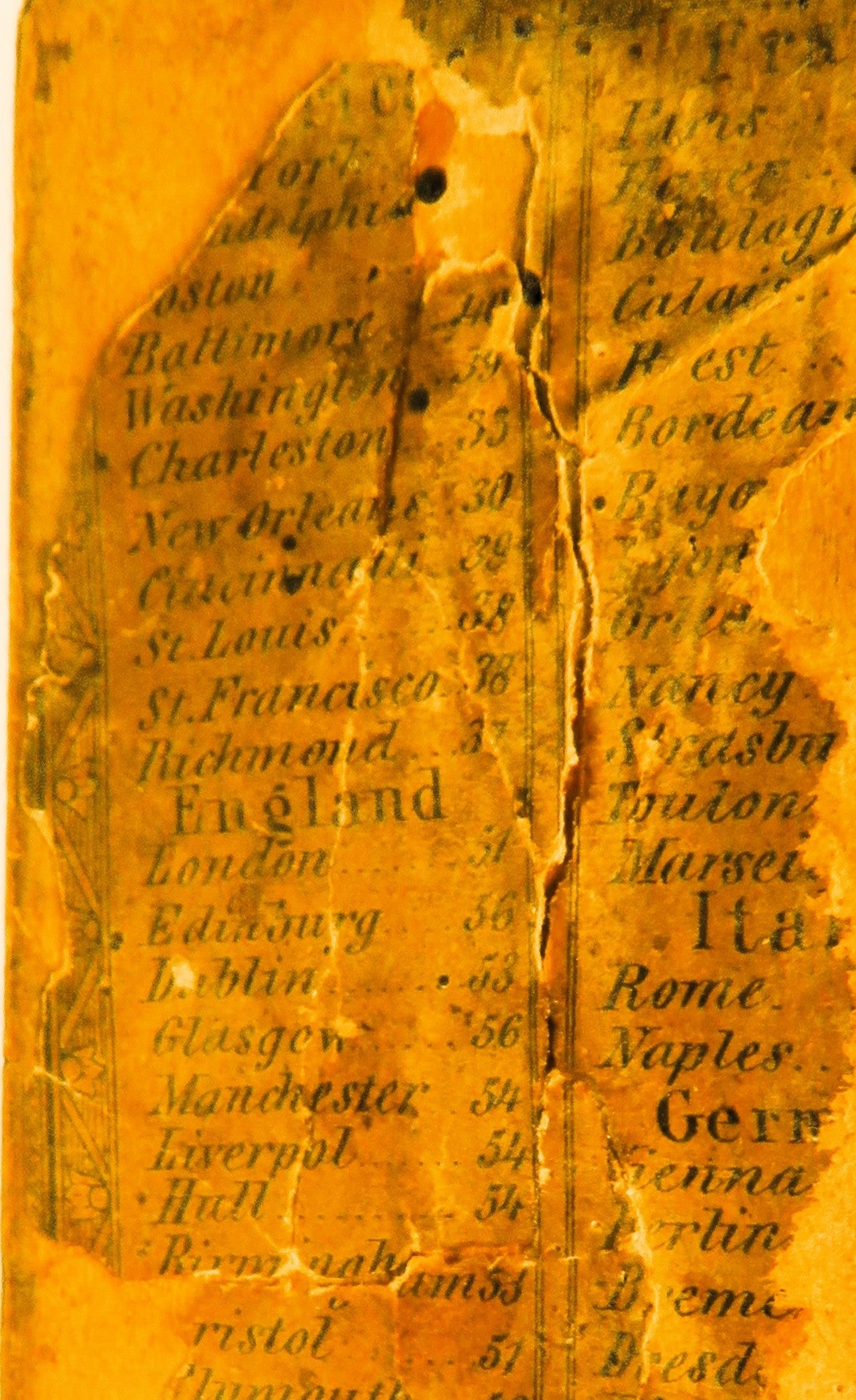Sammler-Uhren
Stockert Ernst Christoph a Bavaria Nuremberg 1765 folding travel sundial
Stockert Ernst Christoph a Bavaria Nuremberg 1765 folding travel sundial
Couldn't load pickup availability
Rarest, original. Christoph Stockert a bavaria Nuremberg / Fürth folding sundial ca. 1765
The rare surviving sundials of the German sundial-making legend Christoph Stockert from Fürth near Nuremberg, born in 1750, are now exhibited in the most important museums in the world, including the British Museum in London, Harvard and Oxford Universities, the Metropolitan Museum of Art in New York and the National Maritime Museum of Greenwich.
Attention: the museum piece has slight defects and signs of wear
The legendary wooden folding sundial by Ernst Christoph Stockert from Nuremberg - after all, over 250 years old - is the legend and most famous among the early pocket sundials
Case dimensions: 7.5cm x 4.4cm, weight: 25g
Compass complete and functional, wooden case also seems to be complete, connecting cord broken, but that is a small thing to replace, sticker/list back partly faulty
The outer paper sticker with a list of many cities is incomplete, the inner "dial" with Roman numerals in the hinged lid is well preserved (see photos), the signature "Stockert a Bavaria" is clearly legible
A super rare, museum-quality, 250-year-old artifact with only very slight signs of age and use, which can be restored even by a layperson (if desired, the missing paper sticker on the outside can be printed out in the correct size from good photos on the Internet and completely reattached). The artifact is currently in its historical condition.
EZ: Still 2 due to age, only slight defects / missing parts on the outside, otherwise complete and functional
History/Curriculum Vitae of the sundial maker Ernst Stockert (Source: astronomie-nuernberg.de):
Ernst Christoph Stockert
Compass maker from Fürth.
* 13.06.1746 in Sindolsheim ; † 25.04.1811 in Fürth [
- Father: Wolf Philipp Stockert, hunter in Sindolsheim.
- Marriage: August 31, 1772 in Nuremberg-St. Bartholomäus (Wöhrd): Eva Margaretha (31.01.1747-02.11.1820), daughter of the shoemaker Johann Caspar Lacker (1692/93-03.06.1761) and his wife Brigitte from Pfäfflingen.
-
Children: 4 sons, 6 daughters.
CV:

|
Ernst Christoph Stockert was born on June 13, 1746, in Sindolsheim, west of Bad Mergentheim. His wife was from Pfäfflingen, today a district of Nördlingen. The first four children from this marriage were baptized in Nuremberg. At that time, his father worked as a tenant farmer in various gardens, including the "Mistgruben" (Mistgrube). The Mistgrube was located approximately at the intersection of today's Bayreuther Straße and Veillodterstraße, and thus in the immediate vicinity of today's Rennweg subway station. |
The following twins were baptized in Fürth in 1781, so he seems to have moved to Fürth with his family around 1780.
Both the twins and their daughter Kunigunda, born in 1782, had wives of Nuremberg craftsmen as godmothers, so Stockert still maintained ties to Nuremberg.
At the birth of the twins, Stockert was already called a compass maker, and at the baptism of his daughter Kunigunda in 1782, he was even called "Mathematicus".
Stockert died of "emaciation" on April 25, 1811, in Fürth. At that time, he lived at house 220, today's Gustavstraße 59. His wife, at the time of her death in 1820, lived at house 152, today's Helmstraße 3 in Fürth.
Works:
 |
Several sundials by Stockert have been preserved, which he signed with "EC Stockert". |
Ernst Christoph Stockert was the founding father of an entire dynasty of compass makers who continued to work well into the 20th century.
| Compass makers of the Stockert family in the 19th century | ||||
| 1st generation: | Ernst Christoph Stockert | |||
| 2nd generation: | Johann Paul Stockert | Johann Philipp Lorenz Stockert | ||
| 3rd generation: | Rudolph Christoph Stockert | Karl Sebastian Stockert | ||
| 4th generation: | Paul Stockert | Johann Thomas Stockert | ||
Literature:
- Gaab, Hans: Compass Makers in Nuremberg and Fürth in the 19th Century. 2024
- Liebau, Frank: The compass makers from Nuremberg and Fürth (including detailed information on the sundials of the Stockert family).
- Wagner, Gerhard G.: Sundials and Scientific Instruments from the Collections of the Mainfränkisches Museum Würzburg. Würzburg 1997, pp. 28-29
- Zinner, Ernst: German and Dutch Astronomical Instruments of the 11th to 18th Centuries. Munich: Beck 1979, p. 542
Left:
-
Folding sundials
- Folding sundial by E. Ch. Stockert, Harvard University
- Folding sundial by EC Stockert, Museum for the History of Science, University of Oxford
- Folding sundial by EC Stockert, National Maritime Museum, Greenwich
- Folding sundial by EC Stockert, National Maritime Museum, Greenwich
- Folding sundial by EC Stockert, British Museum, London
- Folding sundial by EC Stockert, Nordisk Museum, Stockholm
-
- Sundial by Paul Reinmann, in which the compass was replaced by a compass by E. Ch. Stockert, British Museum, London
-
- Folding sundial by Stockert, Bohusläns Museum, Uddevalla, Sweden
- Folding sundial by Stockert, Metropolitan Museum of Art
- Cube sundial by EC Stockert, Adler Planetarium, Chicago
- Cube sundial by EC Stockert, Adler Planetarium, Chicago
Cube sundial by EC Stockert, National Maritime Museum, Greenwich
-
- Cube sundial by EC Stockert, Metropolitan Museum of Art
